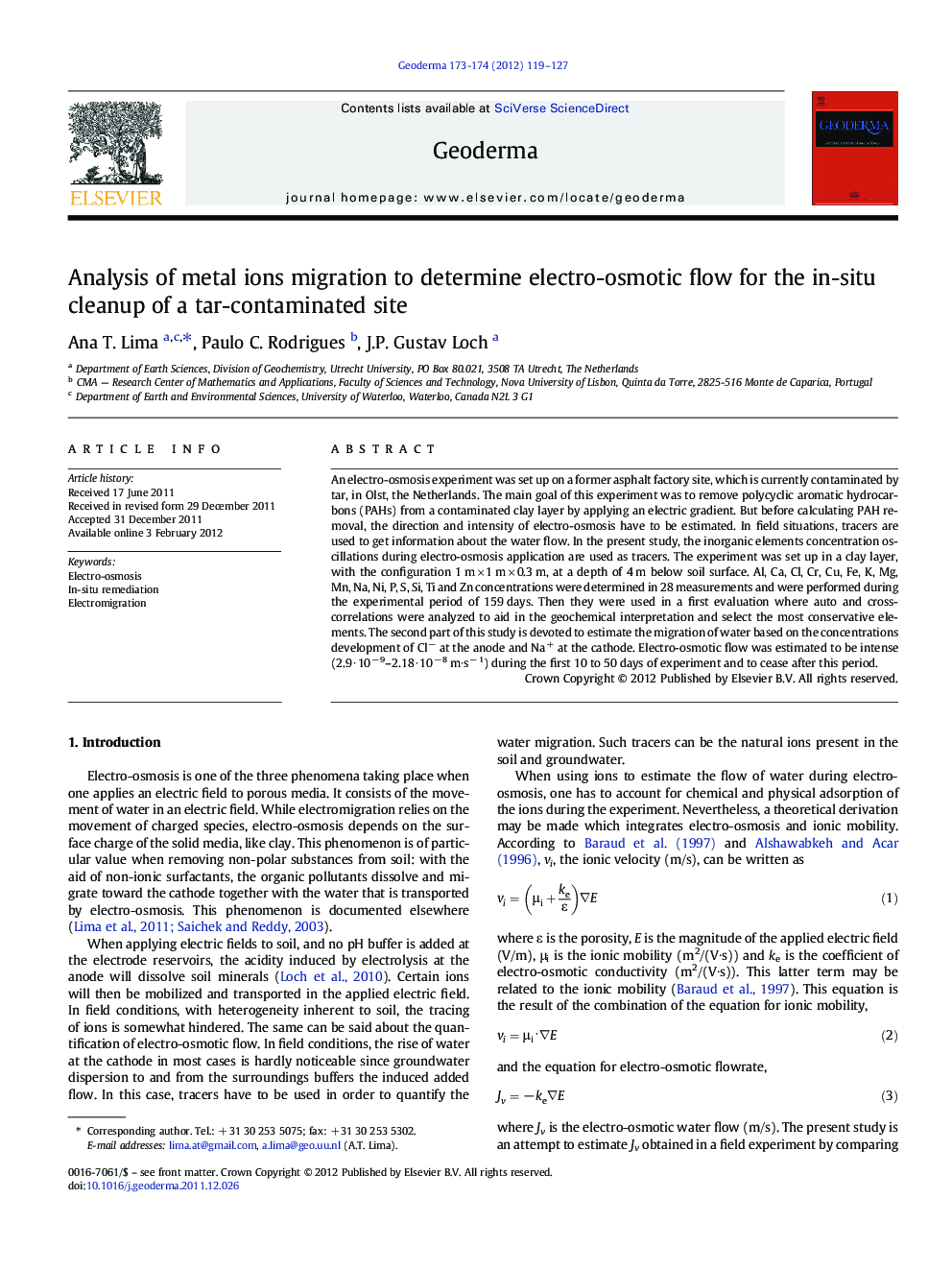| Article ID | Journal | Published Year | Pages | File Type |
|---|---|---|---|---|
| 4573941 | Geoderma | 2012 | 9 Pages |
An electro-osmosis experiment was set up on a former asphalt factory site, which is currently contaminated by tar, in Olst, the Netherlands. The main goal of this experiment was to remove polycyclic aromatic hydrocarbons (PAHs) from a contaminated clay layer by applying an electric gradient. But before calculating PAH removal, the direction and intensity of electro-osmosis have to be estimated. In field situations, tracers are used to get information about the water flow. In the present study, the inorganic elements concentration oscillations during electro-osmosis application are used as tracers. The experiment was set up in a clay layer, with the configuration 1 m × 1 m × 0.3 m, at a depth of 4 m below soil surface. Al, Ca, Cl, Cr, Cu, Fe, K, Mg, Mn, Na, Ni, P, S, Si, Ti and Zn concentrations were determined in 28 measurements and were performed during the experimental period of 159 days. Then they were used in a first evaluation where auto and cross-correlations were analyzed to aid in the geochemical interpretation and select the most conservative elements. The second part of this study is devoted to estimate the migration of water based on the concentrations development of Cl− at the anode and Na+ at the cathode. Electro-osmotic flow was estimated to be intense (2.9 ∙ 10− 9–2.18 ∙ 10− 8 m∙s− 1) during the first 10 to 50 days of experiment and to cease after this period.
► In-situ electro-osmosis experiment performed at tar contaminated site (Netherlands). ► The major challenge of this study was to quantify the electro-osmotic water flux. ► A and mathematical was applied. ► A statistical tool was used to establish soil’s geochemical weathering sequence. ► A simple model was used to estimate the electro-osmotic water flux and quantify it.
